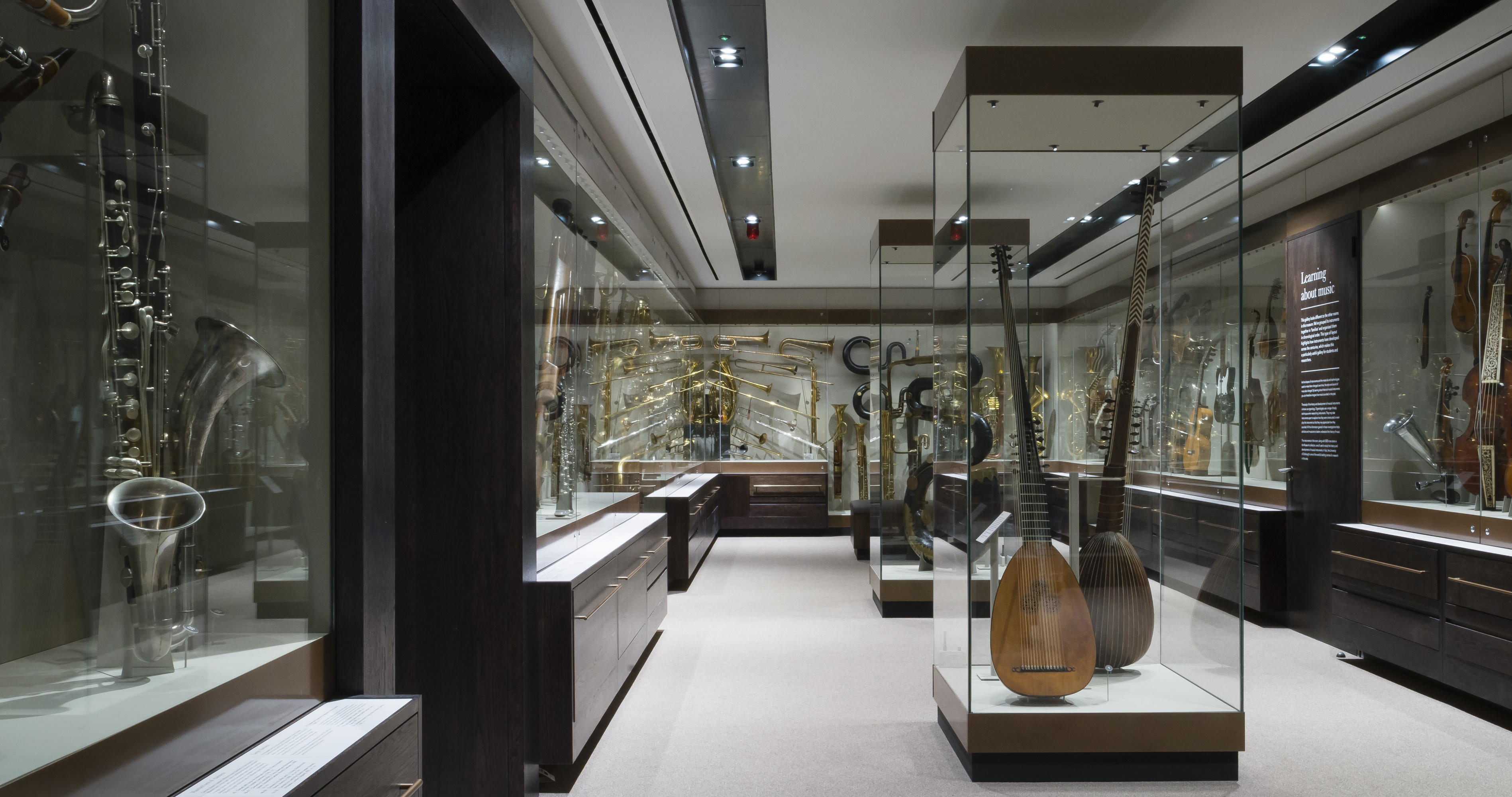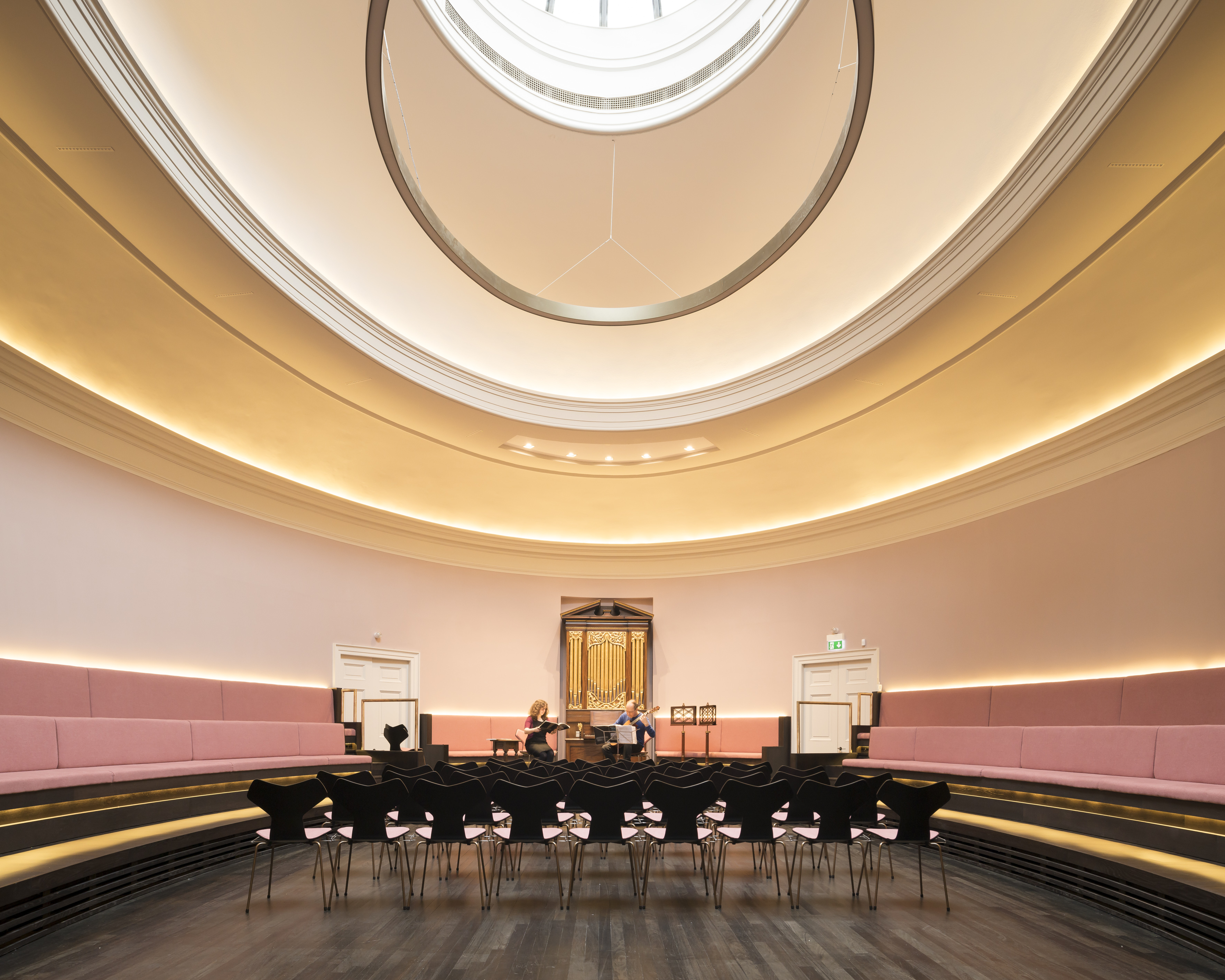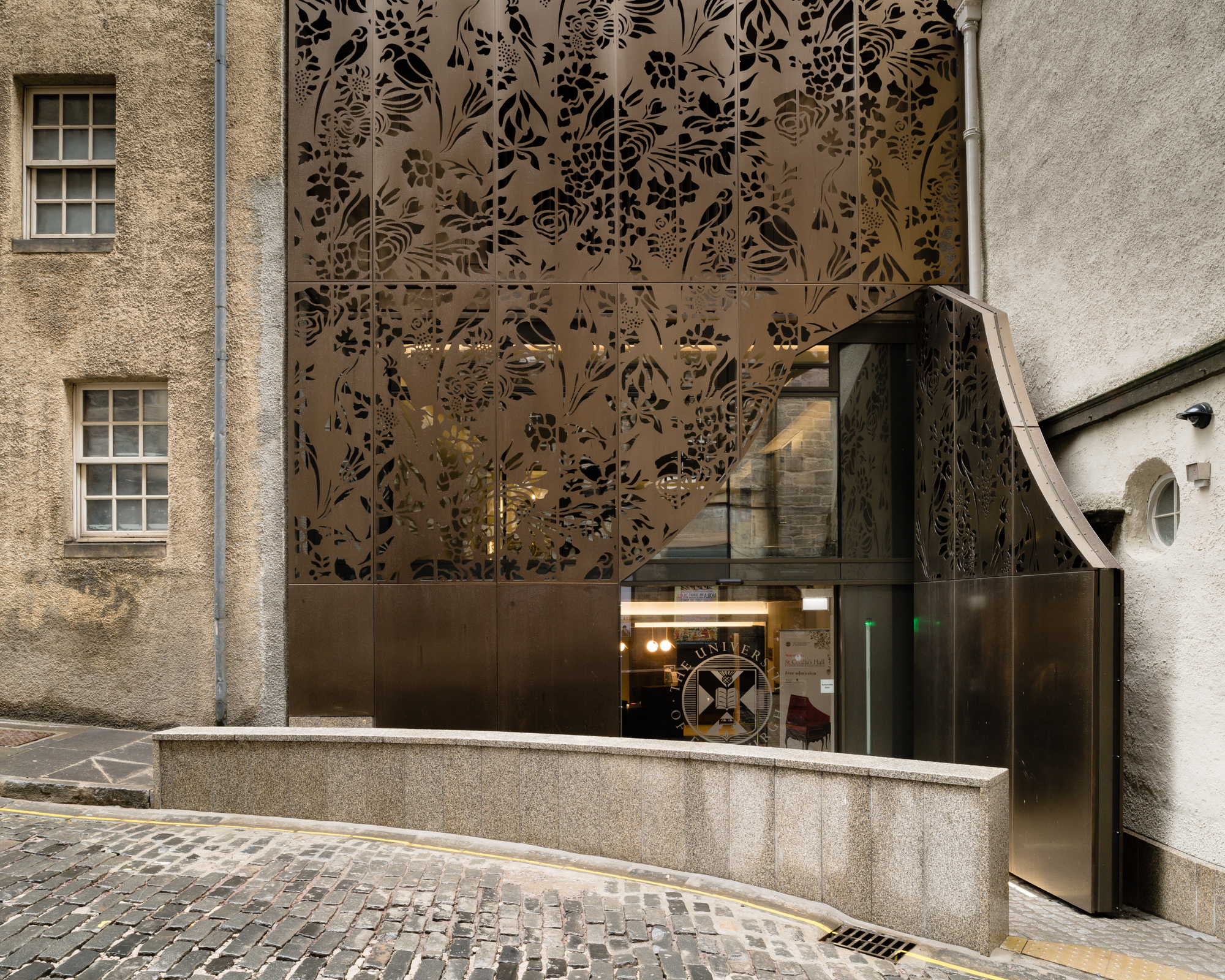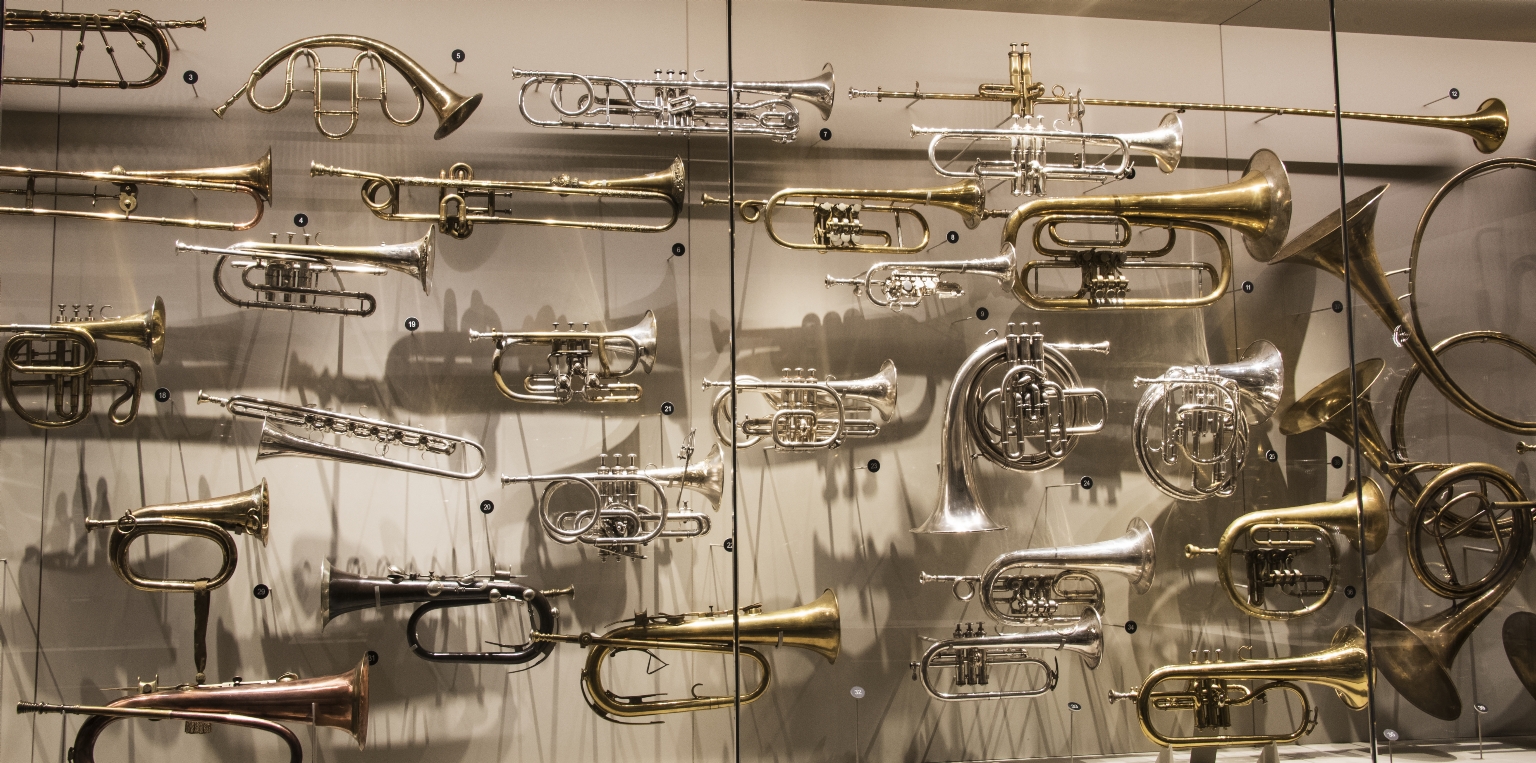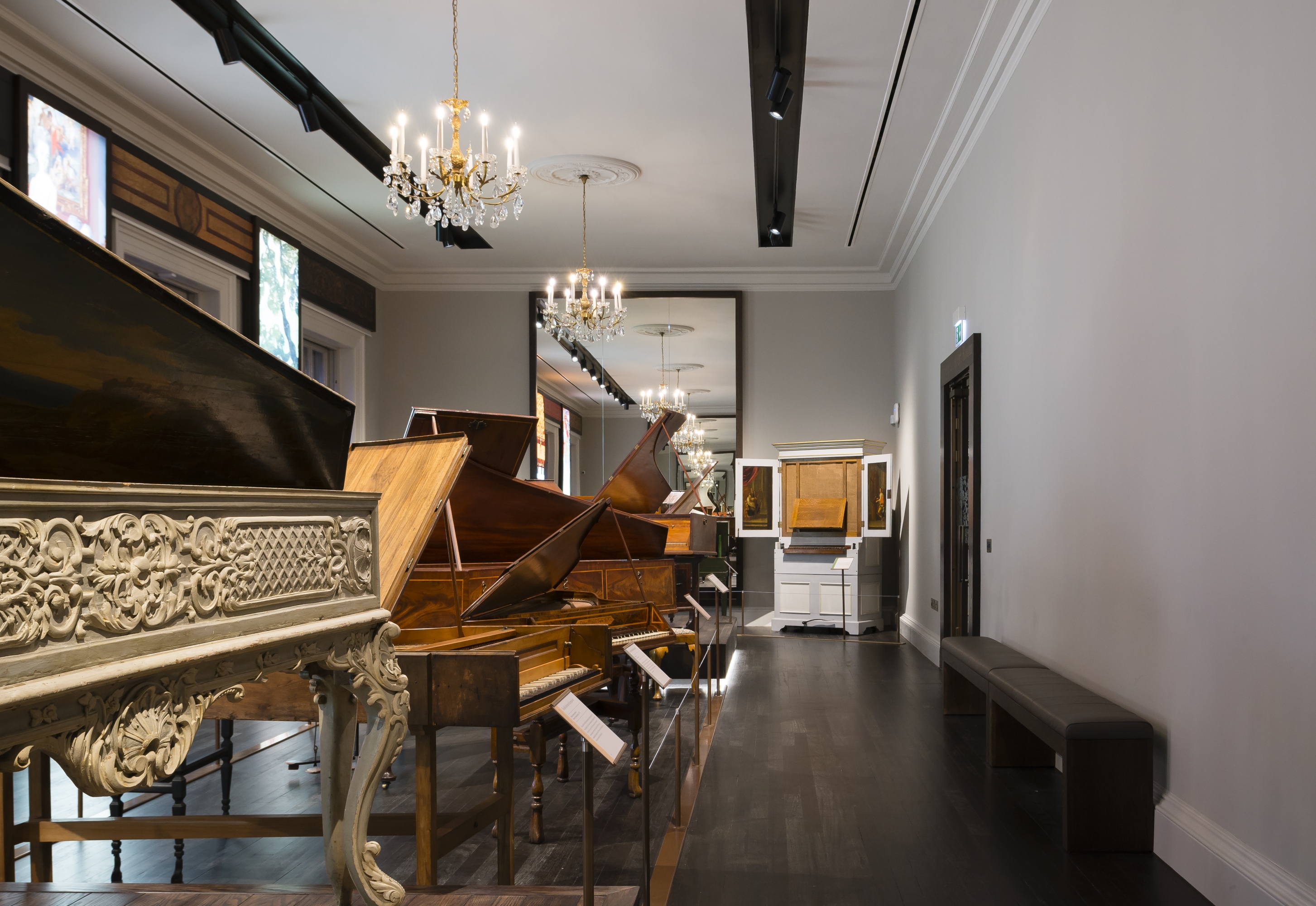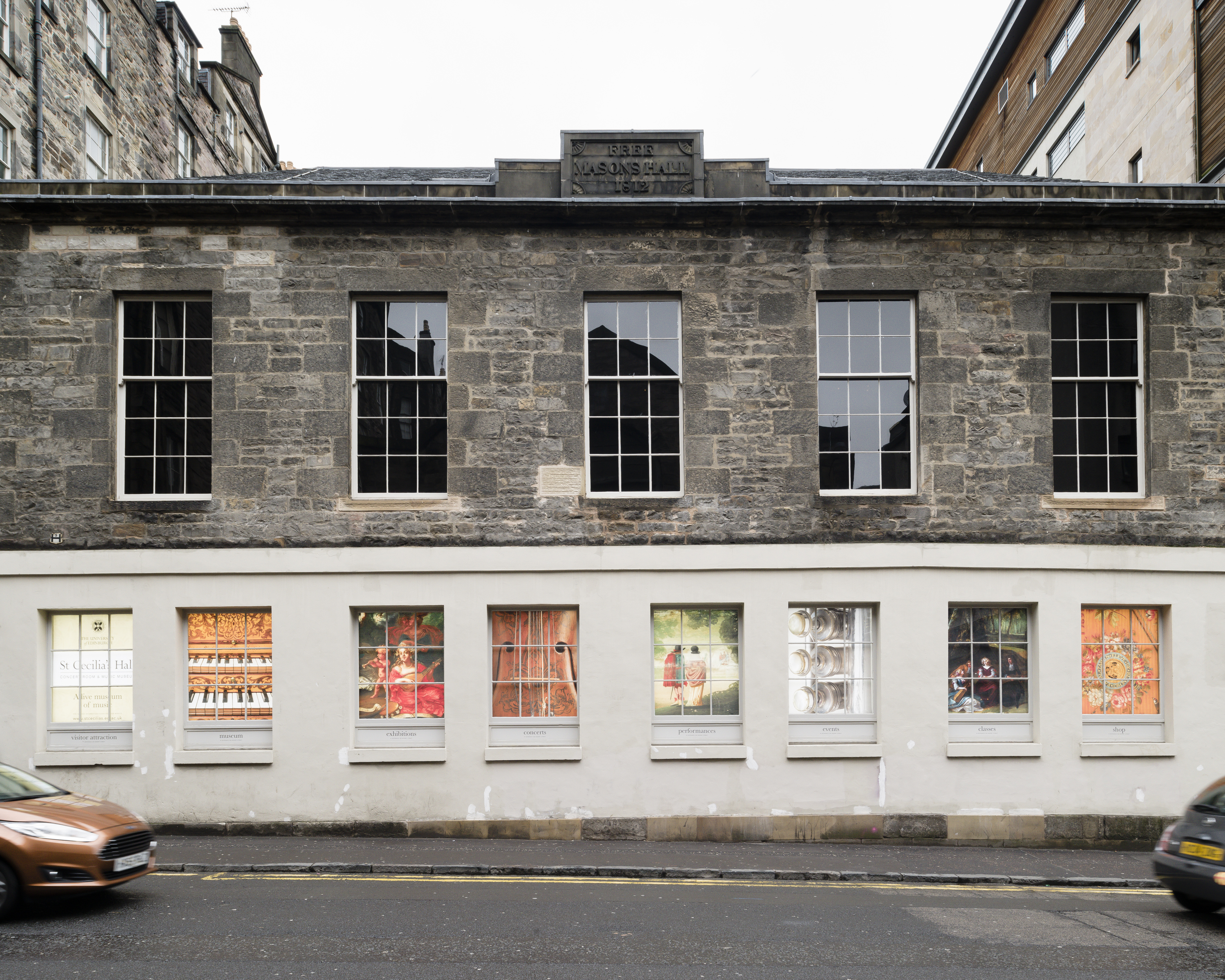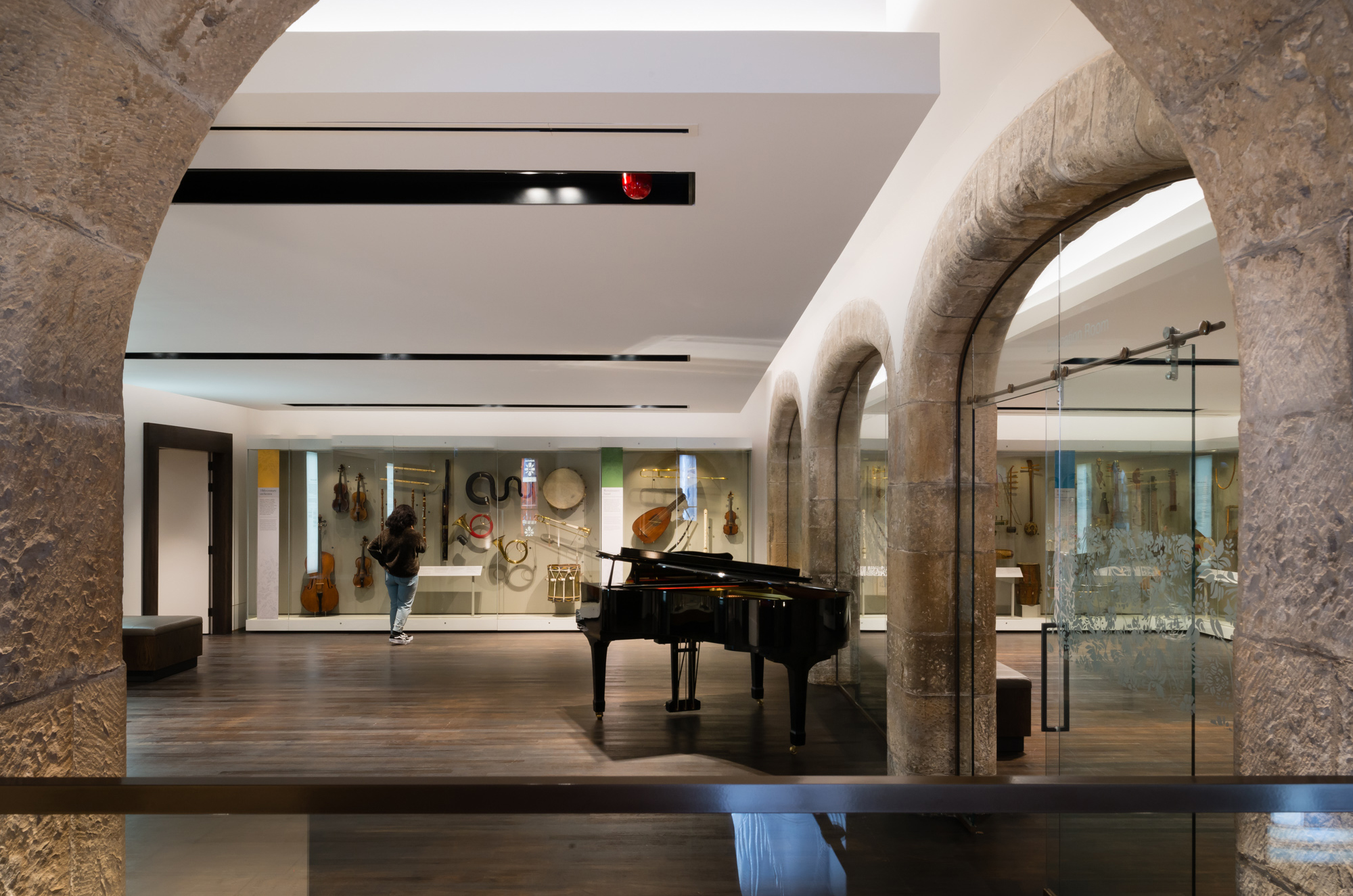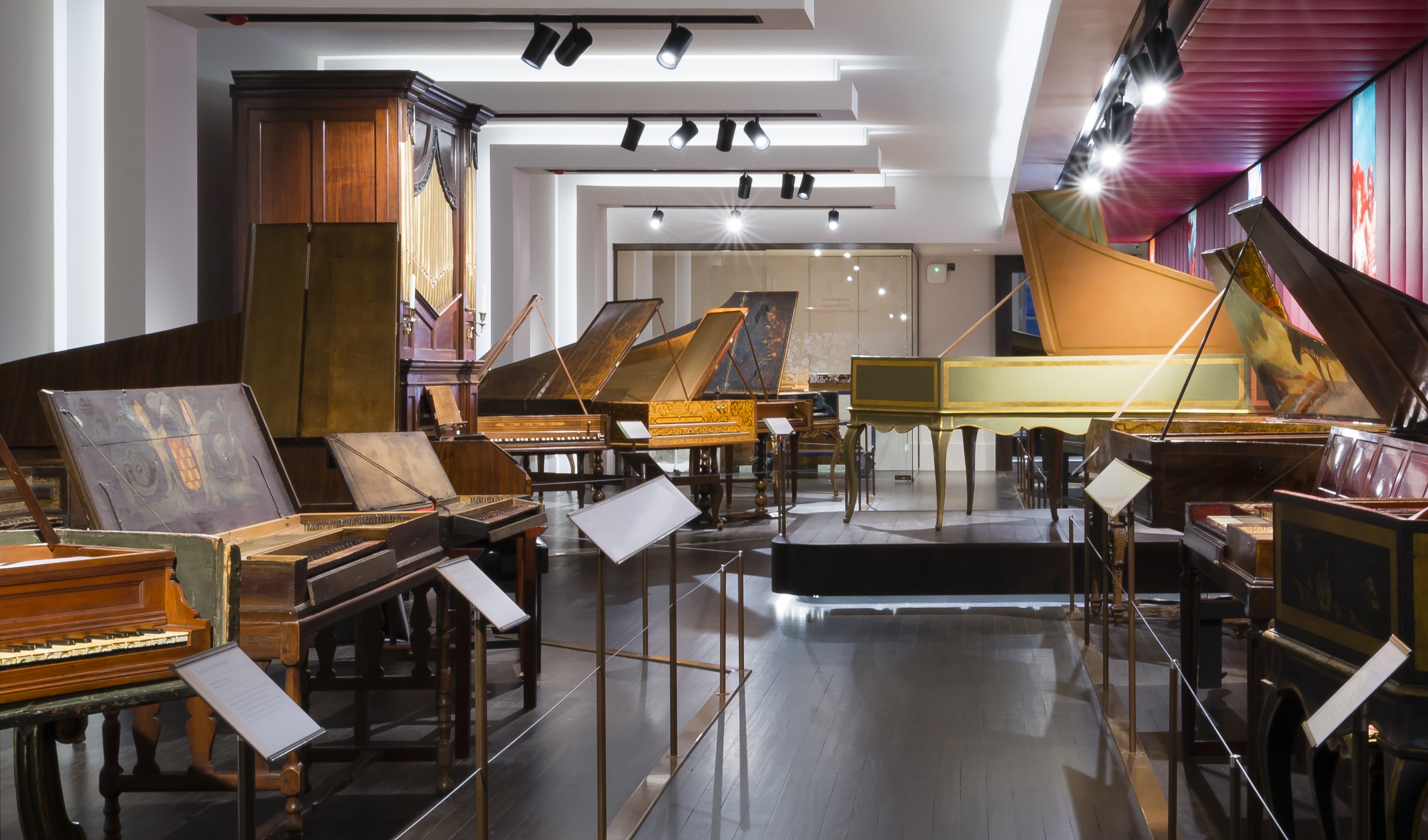Music from Misery
A World of Goods
Hamburg was (and still is) one of the biggest trading ports in Europe. Every day, ships from all over the world would arrive in Hamburg with exotic goods. In the 18th century, goods like sugar and coffee, which we think of today as “normal”, were first being brought to Europe on a huge scale yet were still very expensive. This world of trade was the one in which our clavichord was made. The Hass family relied on the goods arriving in Hamburg’s ports to make their instruments. Our 1763 Hass clavichord, in particular, is made up of some very expensive and disturbing materials, which would have been brought to Hamburg from all over the world. The table below shows some of the incoming goods which were being brought into Hamburg’s port.
Selected incoming trade goods of Hamburg’s maritime trade, 1733-17981
| Type of Goods | Worth (M.B.) | % of total |
|---|---|---|
| Sugar | 246,062,312 | 36.74 |
| Coffee | 131,841,134 | 19.61 |
| Woollen Goods | 30,174,490 | 4.49 |
| Wine | 28,690.74 | 4.27 |
| Tabacco | 21,461,929 | 3.19 |
| Dyeing Materials (especially Indigo) | 17,453,595 | 2.6 |
| Colonial Goods | 4,732,345 | 0.7 |
| Wood | 1,107,061 | 0.16 |
| Ivory and Ivory Goods | 169,400 | 0.03 |
| Corals | 3,295 | 0.001 |
Let us take a deeper look into some of the materials that were used in the construction of our Clavichord. We can learn many things if we ask the following questions: What are these materials? Where did they come from? What can they tell us about the world back then, and our world today?

Here we can see how the keyboard uses three very unfamiliar materials. Ivory is used for the fronts of the keys. There is a circular engraving on each piece. Tortoiseshell is used on the top of the natural keys. Mother-of-pearl is used for the tops of the sharp keys. In this section of the website, we will explain what these materials are, what the story behind them in this instrument is, and how animals and plants need protection from humans.
Ivory
Ivory has been used by humans for at least 25,000 years. In the image below, you can see one of the earliest artworks made of ivory. It is called the Lady with the Hood. This was found in a cave in France and is believed to be from around 21,000 BC.2

© RMN-GP. Jean-Gilles Berizzi
Did you know that ivory is a material that comes from tusks? The figure above was made from mammoth tusks, but most ivory comes from elephants. The tusks of an elephant continue to grow throughout their lives, averaging around 2 metres in length.
Elephants have been poached for thousands of years by humans in order to get the ivory material from their tusks. The problem got so bad that elephants in many parts of Africa became endangered and nearly extinct. Human hunters, known as poachers, would go around looking for elephants to kill to get valuable ivory material, which would then be sold and traded all around the world. Thankfully, ivory trading today is illegal because of an international law, known as CITES (‘Convention on International Trade in Endangered Species’). Many countries throughout the world have signed this law, which makes the international trade in many animal and plant species illegal. In 1990, the trade in ivory was made illegal under the CITES law. Since then, the hunting of elephants for their tusks has declined and elephant populations in many parts of Africa are recovering. There is still, however, a large amount of illegal elephant poaching and ivory trade going on around the world.3 On average, three cases of ivory trade are caught and stopped every day. Every year, approximately 18 tons of elephant products are confiscated.4
The European ivory trade reached a peak in the 17th and 18th centuries, at the time our clavichord was made. The ivory trade overlaps both in time and space with the transportation of enslaved people. Traders and boats would travel from Europe to West Africa to buy both enslaved people and ivory. Ships then carried both enslaved people and ivory over the Atlantic to the European colonial possessions in the “New World” (North and South America). Most of the ivory would travel to Europe from the “New World”. This trade of enslaved people is known as the “triangular slave trade”. For most of the 17th Century, the English Royal African Company was in charge of English trade in West Africa. The Company was the only English company allowed to trade in Africa until 1698. The Royal African Company was the largest transporter of slaves and ivory at the time. The same trade routes, traders, and ships were used to transfer both enslaved people and ivory, linking the story of the slave trade with our clavichord.5
Ivory was transported to England mainly over the stop-over in the West Indies (Caribbean islands), where enslaved people were sold and other materials like sugar were bought to be transported with the ivory back to England.5 Although most of the ivory brought to England was used there, some of it was exported to areas in Germany. We can assume that the ivory used to make this clavichord arrived in Hamburg from a port in London or Hull.
Ivory that was brought to England by the Royal African Company was sold at auctions in lots, usually sorted by quality. The sales of ivory by the Royal African Company account for more than 800 dead elephants per year. Added together with other ivory traders, more than 4,000 elephants a year must have died to supply the English imports.5
Ivory was used for different artistic purposes, ranging from carved crucifixes, medallions and statues to coffins, furniture and large chests. The resilience of ivory made it useful for cutlery handles, chess pieces and boards, flasks, billiard balls and keys for musical instruments.
Tortoiseshell
The natural keys are covered in tortoiseshell. Most commonly, tortoiseshell is a material that comes from the hawksbill sea turtle. The hawksbill turtle has its home in tropical waters, including in the Atlantic, especially around the Caribbean as well as in the Pacific and Indian Oceans. The hawksbill turtle gets its name from its unique mouth which resembles the beak of a Hawk.6
The hawksbill sea turtle is also known as Eretmochelys imbricata under its scientific classification. Both terms describe the same animal, but the scientific classification is used by biologists and other types of scientists when talking about animal and plant species. There is a whole science about finding the right names for different kinds of organisms, called taxonomy. In taxonomy, there is a hierarchy or ranking, where every organism is put into a group. As we descend through the ranks, the groups get smaller and smaller until we arrive at our exact species, namely the hawksbill sea turtle or Eretmochelys (Genus) imbricata (Species). If you want to learn more about taxonomy and how different organisms are named, you can visit this website.
| Kingdom | Animalia |
| Phylum | Chordata |
| Class | Reptilia |
| Order | Testudines |
| Family | Cheloniidae |
| Genus | Eretmochelys |
| Species | Imbricata |
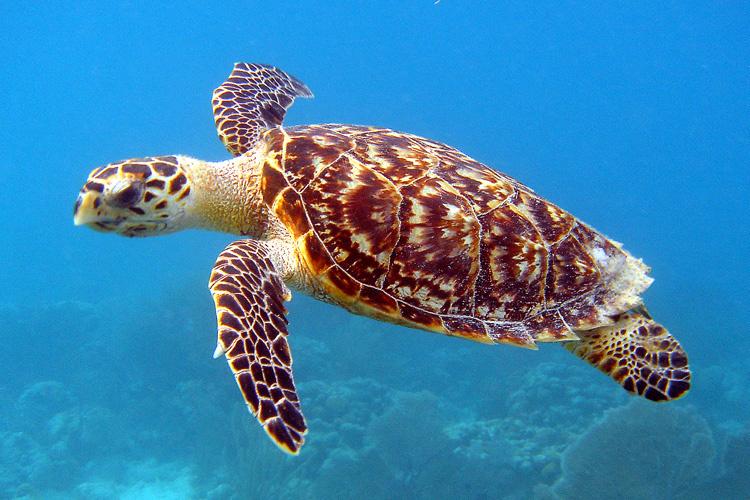
Tortoiseshell has been made from the hawksbill turtle since the times of the Romans.7 The material is made from the shell plates of the turtle. The shell is either softened in boiling water so that it can be worked with, or sawed to cut a form from the shell. As for the fate of the hawksbill turtle, its beautiful shell has been both a blessing and a curse.
The trade of tortoiseshell was very common until the second half of the 20th Century. Although tortoiseshell had been used for over 2,000 years, it became heavily exploited since the 17th Century, especially by Europeans who destroyed much of the turtle population in the Caribbean. The international trade of tortoiseshell spiked in the 1970s and 1980s. Most of the trade came from turtle exports from the Pacific basin.8
Today, the hawksbill sea turtle is one of the least abundant sea turtle species, with fewer than 25,000 nesting females estimated globally. They are directly targeted in fishing. As a result, direct exploitation is a major factor behind their endangerment. It is estimated that 1.4 million adult turtles were killed from 1950-1992. However, sea turtles are important animals in their ecosystems. They are grazers, maintaining the health of seagrass and coral reef ecosystems. Unfortunately, their decline has negatively impacted the stability of their ecosystems.8
The hawksbill sea turtle is now being protected as an endangered animal. Most countries have banned international trade of the hawksbill sea turtles by signing onto the CITES laws in the late 1970s and early 1980s. However, illegal fishing and trading of the hawksbill sea turtle continues to the present day as populations declines and deplete. 8
Rosewood
Our clavichord uses many kinds of woods. The usual choice of wood would be olive wood, but this is expensive. Decorative instruments also use the precious and endangered Kingwood, as well as the even more endangered rosewood, also called Dalbergia nigra.
Rosewood is native to the Bahia, Espirito Santo, Minas Gerais and Rio De Janeiro regions of Brazil. It is one of the largest plant species in the Brazilian Atlantic Forest, growing to a height of up to 40 metres. The nitrogen-fixing bacteria and fungi in its roots allow the tree to survive and grow even in nutrient deficient soils.
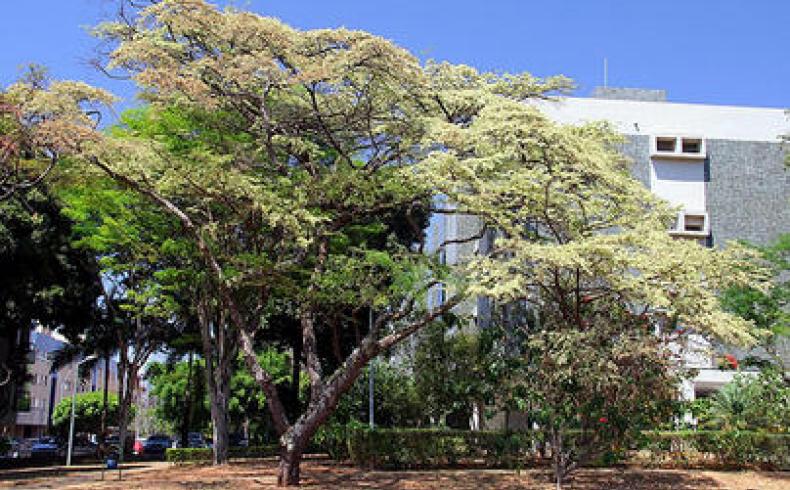
Today, rosewood is used for chemical products such as fragrance, cosmetics, medicines as well as for its wood. Rosewood itself is commonly used for expensive furniture and instruments. As a result, the population suffers from deforestation and habitat loss. The population today only exists in fragments of small populations with low genetic variation. For these reasons Brazilian rosewood became one of the first tree species to be listed in Appendix 1 of CITES, making its international trade illegal.9
In the 18th century, Brazil was still a colony of Portugal. We can assume that under the rule of the Portuguese, these valuable trees were logged down and transported over the Atlantic to Portugal, from where the wood would be shipped to further destinations like Hamburg. The logging of these trees continues to have extremely negative impacts on the environment and the indigenous people who live there. The deforestation of the Amazonas is most commonly known. However, it is the Atlantic Forest where Portuguese colonizers first made shore. Today, over 85% of what used to be the Atlantic Forest has been deforested. In the process, many plant and animal species have gone extinct and indigenous populations have had their habitats destroyed.10 If you want to find out more about the endangered Atlantic Forest, you might want to start here.
Mother of Pearl
Mother-of-pearl or nacre is used in our clavichord, mainly on the sharp keys and on the toolbox, located to the left of the keyboard as can be seen below.

Mother-of-pearl is a material that is similar to pearls produced by types of molluscs. Snails, slugs, clams, oysters and mussels are all molluscs. Mother-of-pearl is produced by some molluscs, like the pearl oyster, as part of their inner shell. This is seen well in the image below.

This Wikipedia and Wikimedia Commons image is from the user Chris 73 and is freely available at //commons.wikimedia.org/wiki/File:NautilusCutawayLogarithmicSpiral.jpg under the creative commons cc-by-sa 3.0 license.
Mother-of-pearl has been used by humans for millennia. It has amazing artistic qualities. When looking at it from the top, it has a shimmering reflective surface, almost like a rainbow.
Around the time our clavichord was being built, Spain was the largest European importer of nacre and pearls. From the 16th century onward, the Spanish colonies in Venezuela, Panama, and the Gulf of California were the main regions of pearling. Christopher Columbus was the first to discover the pearl wealth of the Venezuela coast islands, by which he named the islands Isla de Las Perlas. The Spanish exploited oyster beds, first forcing the natives to work for them and then replacing them with enslaved Africans. Once the Venezuelan coast resources were exhausted, they exploited the Gulf of Panama. In 1535, Hernan Cortes formed pearl fisheries in the Gulf of California. Spanish pearls remained the main “New World” import until gold and silver mines were discovered. The Spanish Crown had a monopoly on pearls and had strict control on licences for pearl oyster fishing, on which they imposed a tax called Quinto Real. This tax was equal to 1/5 of the total value. The search for pearl regions was a driver for mapping the unknown coasts for the Europeans.11
The mother-of-pearl used for our clavichord in Hamburg could very likely have come from Islas de las Perlas or Pearl Islands, a group of over 200 islands of the coast of Panama, where Spanish pearling was taking place. The largest island there is called Contadora Island, meaning “the one that counts”. This refers to the fact that on this island, the pearls and the mother-of-pearl were gathered and counted then shipped off to destinations in Europe.11 The use of mother-of-pearl in our clavichord is intertwined with the Spanish colonization of South and Central America, as well as being part of the continued exploitation of wildlife by humans all over the world.
Activity
Fill out the biological classification table below for both the Brazilian Rosewood tree and for another animal or plant of your choice.
| Kingdom | |
| Phylum | |
| Class | |
| Order | |
| Family | |
| Genus | Dalbergia |
| Species | nigra |
Bibliography
1. Data from: Pfister, U., ‘Great Divergence, Consumer Revolution and the Reorganization of Textile Markets: Evidence from Hamburg’s Import Trade, Eighteenth Century’, Economic History Working Papers, (266, 2017).
2. musee-archeologienationale.fr. Accessed 31.05.2021. The “Lady with the Hood” | Musée d’Archéologie nationale (musee-archeologienationale.fr).
3. eia-international.org. Accessed 03.06.2021. It’s 30 years since the CITES global ban on ivory trade – and the fight to preserve it goes on – EIA (eia-international.org).
4. Reifenstein, Vera, Dr. Simon, Barbara, Ziegler, Stefan, ‘Auf den Zahn gefühlt Handel und Kunst mit Elfenbein’, (Frankfurt am Main, 2008).
5. Feinberg, Harvey M., and Marion Johnson. ‘The West African Ivory Trade during the Eighteenth Century: The “… and Ivory” Complex’. The International Journal of African Historical Studies (15, 1982), 435–53.
6. fisheries.noaa.gov. Accessed 31.05.2021. Hawksbill Turtle | NOAA Fisheries.
7. conserveturtles.org. Accessed 24.05.2021. The Tortoiseshell Trade – Sea Turtle Conservancy (conserveturtles.org).
8. Miller, Emily A., et al. ‘The Historical Development of Complex Global Trafficking Networks for Marine Wildlife’. Science Advances, (5, 2019).
9. globaltrees.org. Accessed 20.04.2021. Brazilian Rosewood – Global Trees.
10. wwf.panda.org. Accessed 31.05.2021. Atlantic Forests, South America | WWF (panda.org).
11. Cariño, Micheline, and Mario Monteforte-Sanchez. ‘An Environmental History of Nacre and Pearls: Fisheries, Cultivation and Commerce’. Global Environment, (2, 2009), 48–71.
